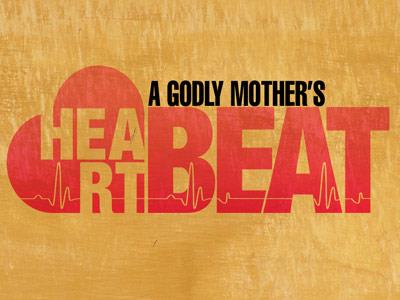-
Mothers Of Messiah-Ruth Of Moab Series
Contributed by Jonathan Spurlock on May 12, 2021 (message contributor)
Summary: She grew up a pagan in a pagan land, but became a believer in the God of her mother-in-law. The story of Ruth is a beautiful story of God's grace and redemption. Another foreign-born girl became a mother of the Messiah!
Introduction: Ruth is only mentioned in the Old Testament book bearing her name. She was a native of Moab, a country to the east of Israel across the Jordan River. Eventually she married a Hebrew man, lost him to death, but journeyed with her mother-in-law to a new land. She became a believer in the God of Israel, and received a very special privilege!
1 Raised as a pagan in a pagan land
Text, Ruth 1:1-5, KJV: 1 Now it came to pass in the days when the judges ruled, that there was a famine in the land. And a certain man of Bethlehemjudah went to sojourn in the country of Moab, he, and his wife, and his two sons. 2 And the name of the man was Elimelech, and the name of his wife Naomi, and the name of his two sons Mahlon and Chilion, Ephrathites of Bethlehemjudah. And they came into the country of Moab, and continued there. 3 And Elimelech Naomi's husband died; and she was left, and her two sons. 4 And they took them wives of the women of Moab; the name of the one was Orpah, and the name of the other Ruth: and they dwelled there about ten years. 5 And Mahlon and Chilion died also both of them; and the woman was left of her two sons and her husband.
Ruth’s story begins when she and another Moabite woman, Orpah, married men of Israel. A word about Moab is in order: the founder of Moab, also named Moab, was the son of Lot, Abraham’s nephew, and Lot’s oldest daughter. More about this is found in Genesis 19. Whether or not Lot’s daughter, the mother of Moab, was ever a believer in the God of Lot and of Abraham is not certain, but it is certain that eventually the Moabites became pagan. Their national “god” was Chemosh, mentioned a few times in the Old Testament. Many years later, one of Moab’s kings, named Mesha, made an inscription called the “stele of Mesha” or something similar, like “the Moabite stone”, describing a certain event in which, in Mesha’s words, “Chemosh was angry with his land” or words to that effect. The internet has articles about this monument or inscription at various locations.
Many years before Mesha’s reign, rhe people of Moab had on occasion dealt with Israel during Israel’s wilderness journey. One such occasion took place when Balak, king of Moab, wanted Balaam to curse Israel. No matter how much Balak wanted this, and no matter how hard Balaam tried, God overruled and caused Balaam to utter blessings, not curses! The whole story is found in Numbers 22-24.
Moab had also conquered at least part of Israel during the days of the Judges, ruling over Israel for 18 years (Judges 3:12-30). But nothing is mentioned about a famine in that passage so the time of Elimelech’s journey to Moab is not certain. The only other clue is that Boaz, mentioned later, referred to Ruth as a woman who did not seek younger men (3:10), so this story may have taken place about 50-100 years after Israel arrived in Canaan. Boaz’ age is never given.
No matter when they arrived in Moab, bad things seemed to happen quickly. Elimelech, Naomi’s husband, died in Moab; nothing is said about his funeral or where he was buried or anything like that. Now Naomi was left, widowed, with two sons and no apparent means of support. Her sons took Moabite women as wives and maybe they all thought this was their “happily ever after”—notice there is no mention of any return, or desire to return, to Bethlehem or even to Israel.
Still, the time these five had together couldn’t have been very long. If I read verse 4 correctly, the group only had 10 years before both of Naomi’s sons died. Again, nothing is mentioned about how they died, where they were buried, or other details. Naomi must have been devastated at these losses, everyone she knew and loved, husbands and sons, all gone.
But eventually Naomi received some good news. Somehow she heard that the famine was gone, and that was enough for her to want to go back to her home. Now imagine the work of packing up over 10 years’ worth of belongings or “stuff” and getting ready to head back to a land that she hadn’t seen in many years!
Apparently all was completed and the day finally came for Naomi to leave Moab—for good. She was going to return to Bethlehem even though she may not have known what was going to happen once she arrived.
And there was still another problem. She had two daughters-in-law who at least told her they wanted to come along!
What was Naomi going to do? What was she going to say to these girls, pagans from a pagan land? Remember, Chemosh was the “god” of Moab, not the LORD, and there is no indication that as of yet either girl had rejected Chemosh. It was bad enough that her sons had married pagan women in a pagan land, but now, for whatever reason, these two wanted to live in Israel with Naomi!

 Sermon Central
Sermon Central



